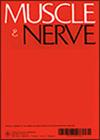基因型对接受皮质类固醇治疗的杜氏肌营养不良症患者丧失行动能力年龄的影响:一项针对 555 名患者的单中心研究
IF 2.8
3区 医学
Q2 CLINICAL NEUROLOGY
引用次数: 0
摘要
导言/目的研究表明,杜氏肌营养不良症(DMD)的某些基因型具有较轻或较重的表型。这些研究包括接受皮质类固醇治疗和未接受皮质类固醇治疗的患者,以及可能采用不同护理标准的多个地点。我们的目的是在一个中心接受皮质类固醇治疗的大批 DMD 患者中,评估丧失行动能力(LoA)年龄的基因型与表型之间的相关性。方法在这项回顾性病历审查中,如果连续 12 个月开具皮质类固醇处方(定义为每日服用 Deflazacort 或泼尼松或大剂量周末泼尼松),则纳入诊断为 DMD 的患者的就诊记录。如果受试者正在接受疾病修饰疗法,则不纳入该受试者。使用LoA的生存分析和费雪精确检验对数据进行分析,以评估选定基因型的晚期卧床者(14岁)的百分比。生存分析表明,与其他队列相比,外显子 44 可跳过队列(p = .004)、外显子 3-7 缺失队列(p <.001)和外显子 2 重复队列(p = .043)的患病年龄较晚,而外显子 51 可跳过队列的患病年龄较早(p <.001)。与其他队列相比,外显子3-7缺失者的晚期活动能力明显高于其他队列(75%),而与其他队列相比,外显子51可跳过缺失者的晚期活动能力明显低于其他队列(11.9%)。本文章由计算机程序翻译,如有差异,请以英文原文为准。
The impact of genotype on age at loss of ambulation in individuals with Duchenne muscular dystrophy treated with corticosteroids: A single‐center study of 555 patients
Introduction/AimsStudies have demonstrated that certain genotypes in Duchenne muscular dystrophy (DMD) have milder or more severe phenotypes. These studies included individuals treated and not treated with corticosteroids and multiple sites with potentially varying standards of care. We aimed to assess genotype–phenotype correlations for age at loss of ambulation (LoA) in a large cohort of individuals with DMD treated with corticosteroids at one center.MethodsIn this retrospective review of medical records, encounters were included for individuals diagnosed with DMD if prescribed corticosteroids, defined as daily deflazacort or prednisone or high‐dose weekend prednisone, for 12 consecutive months. Encounters were excluded if the participants were taking disease‐modifying therapy. Data were analyzed using survival analysis for LoA and Fisher's exact tests to assess the percentage of late ambulatory (>14 years old) individuals for selected genotypes.ResultsOverall, 3948 encounters from 555 individuals were included. Survival analysis showed later age at LoA for exon 44 skip amenable (p = .004), deletion exons 3–7 (p < .001) and duplication exon 2 (p = .043) cohorts and earlier age at LoA for the exon 51 skip amenable cohort (p < .001) when compared with the rest of the cohort. Individuals with deletions of exons 3–7 had significantly more late ambulatory individuals than other cohorts (75%), while those with exon 51 skip amenable deletions had significantly fewer (11.9%) compared with other cohorts.DiscussionThis confirms previous observations of genotype–phenotype correlations in DMD and enhances information for trial design and clinical management.
求助全文
通过发布文献求助,成功后即可免费获取论文全文。
去求助
来源期刊

Muscle & Nerve
医学-临床神经学
CiteScore
6.40
自引率
5.90%
发文量
287
审稿时长
3-6 weeks
期刊介绍:
Muscle & Nerve is an international and interdisciplinary publication of original contributions, in both health and disease, concerning studies of the muscle, the neuromuscular junction, the peripheral motor, sensory and autonomic neurons, and the central nervous system where the behavior of the peripheral nervous system is clarified. Appearing monthly, Muscle & Nerve publishes clinical studies and clinically relevant research reports in the fields of anatomy, biochemistry, cell biology, electrophysiology and electrodiagnosis, epidemiology, genetics, immunology, pathology, pharmacology, physiology, toxicology, and virology. The Journal welcomes articles and reports on basic clinical electrophysiology and electrodiagnosis. We expedite some papers dealing with timely topics to keep up with the fast-moving pace of science, based on the referees'' recommendation.
 求助内容:
求助内容: 应助结果提醒方式:
应助结果提醒方式:


